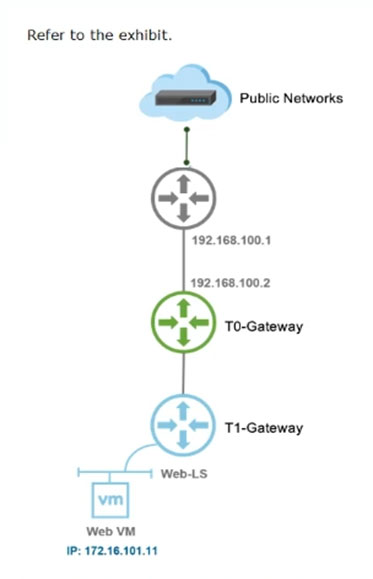An NSX administrator is applying QoS to guarantee bandwidth for critical production workloads.
Which three actions must be taken? (Choose three.)
An NSX administrator is applying QoS to guarantee bandwidth for critical production workloads.
Which three actions must be taken? (Choose three.)
To apply QoS to guarantee bandwidth for critical production workloads in NSX, an administrator must create a QoS segment profile, specify QoS parameters, and change the Segment QoS profile accordingly. Creating the QoS segment profile defines the standards for the traffic, specifying QoS parameters sets the necessary prioritizations and rules, and changing the Segment QoS profile applies these settings to the network segment in question. Editing or exporting JSON files and transport node NIOC profiles are not directly related to this specific requirement.
A customer is planning deployment of a third-party OpenStack application.
Which is used to grant permissions to the application on NSX Manager?
In the context of granting permissions to an application on NSX Manager, Principal Identity is used. Principal identities are designed to be used for non-NSX users and services that need to access NSX Manager programmatically. These identities have roles and permissions assigned to them that allow the appropriate level of access needed for such integrations.
What are three functions of a Tier-0 Gateway in a multi-tenant service provider environment? (Choose three.)
A Tier-0 Gateway in a multi-tenant service provider environment performs several critical functions. Firstly, it acts as a default gateway for tenant workloads, handling their initial routing needs. It also interconnects the Tier-1 gateways of multiple tenants, facilitating communication between different tenants' networks. Lastly, it enables north-south connectivity to tenant workloads, managing traffic that flows in and out of the data center or cloud environment, ensuring proper ingress and egress routing.
What are the supported N-VDS modes?
N-VDS, or NSX-T Virtual Distributed Switch, supports two modes: Standard Datapath and Enhanced Datapath. The Standard Datapath mode is the default mode that offers essential networking features, while the Enhanced Datapath mode provides additional performance optimizations and features, suitable for environments that demand higher performance.

A NSX-T Data Center administrator wants to ensure that any machine on a public network can communicate with a Web VM running in a NSX-T Data Center environment.
Which NAT type must be created on the Tier-0 or Tier-1 Gateway to achieve this?
To allow any machine on a public network to communicate with a Web VM running in a NSX-T Data Center environment, Destination NAT (DNAT) must be configured. DNAT is used to translate the destination IP address of incoming packets to the internal IP address of the web VM, enabling external devices to initiate communication with the internal VM. This is appropriate for scenarios where traffic is originating from outside and needs to reach an internal network, such as incoming requests from the public network to a web server hosted internally.